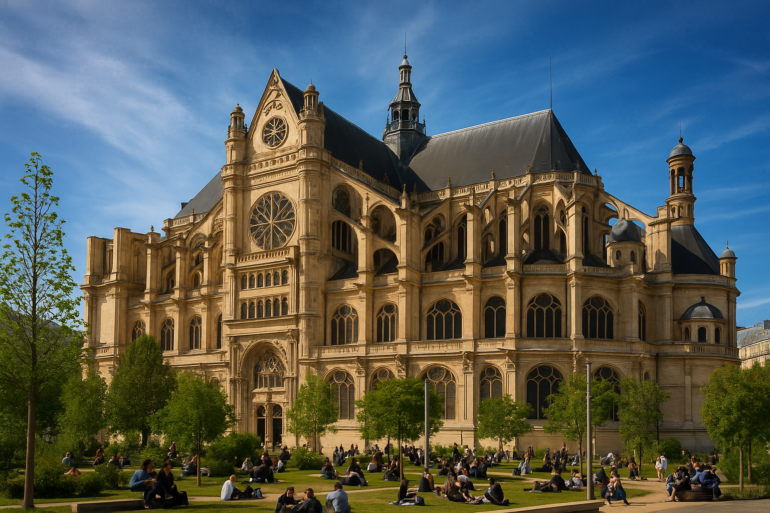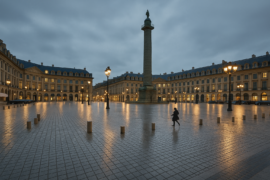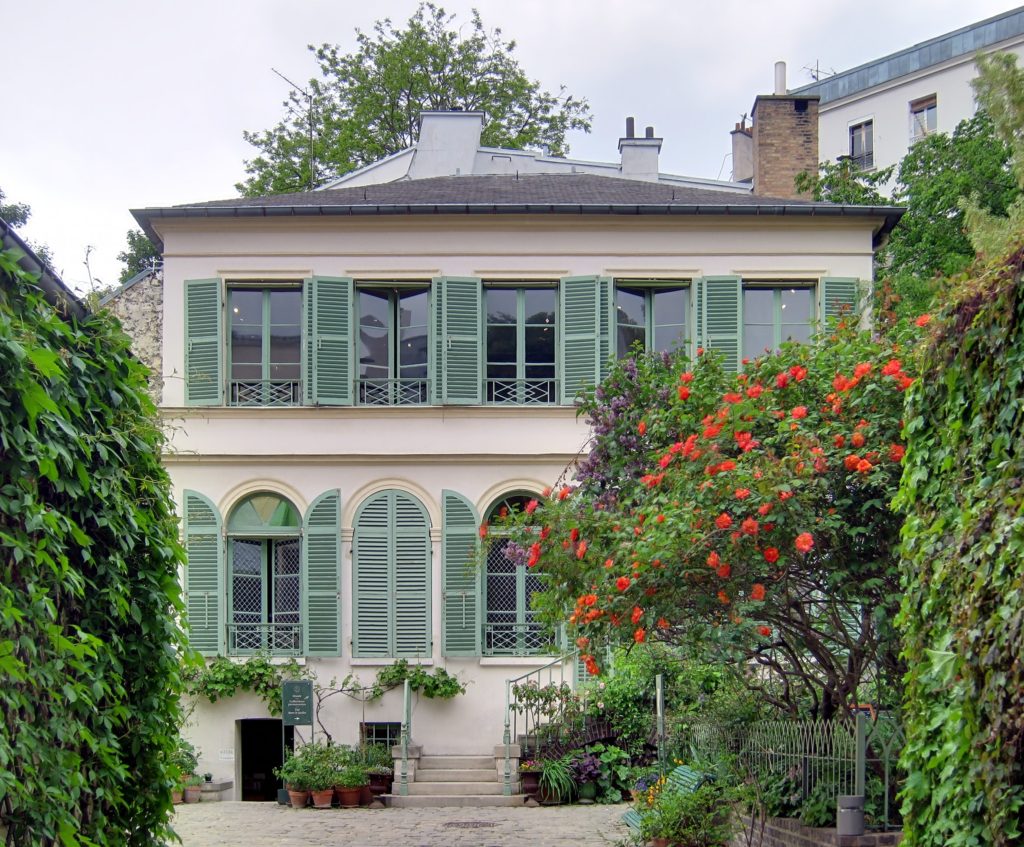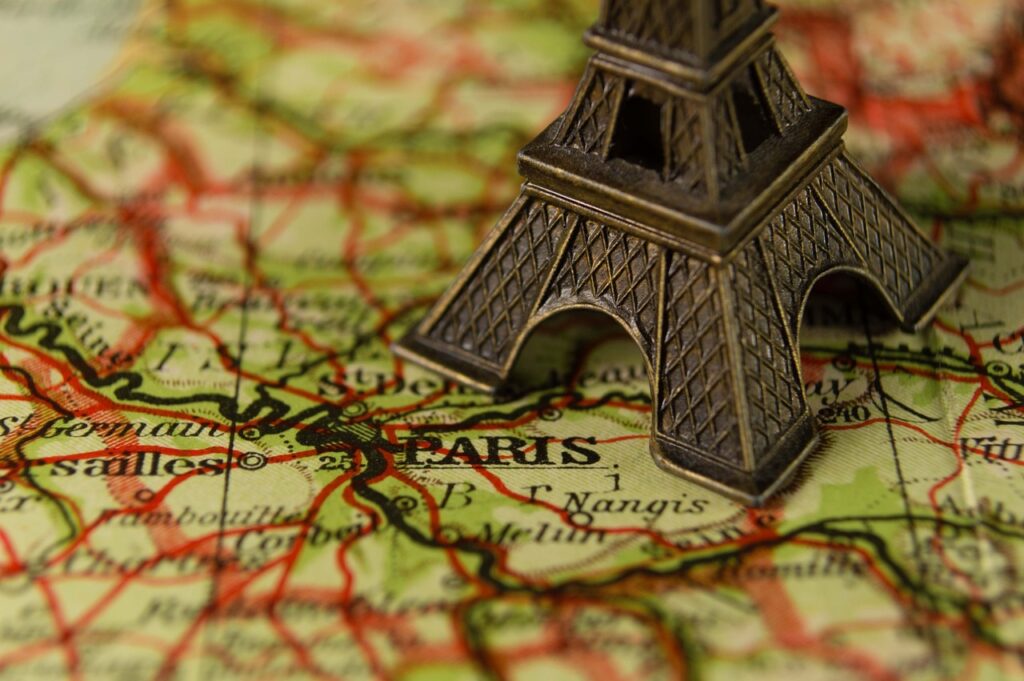Introduction to the Church of Saint-Eustache in Paris
The Church of Saint-Eustache in Paris is a true architectural and historical marvel nestled in the heart of the French capital. Located in the Les Halles district, it attracts thousands of visitors each year who are drawn by its beauty and rich history. The church, standing majestically with its impressive Gothic facades and sumptuous interiors, is a living witness to several centuries of cultural and religious heritage.
As one of the last great Gothic churches in Paris, Saint-Eustache holds a unique place in the city’s history. Its strategic location, near Les Halles, has made it an important gathering place for Parisians for centuries. Whether for a sightseeing visit or a spiritual quest, the Church of Saint-Eustache offers everyone an unforgettable experience.
In this article, I invite you to explore with me the many facets of this iconic church. Together, we will discover its fascinating history, its impressive architecture, its artistic treasures, and its role in the cultural life of Paris. Get ready for a captivating journey through time and art.
History of the Church of Saint-Eustache
The construction of the Church of Saint-Eustache began in 1532 and extended over more than a century, until its completion in 1637. Before the current structure was built, a small sanctuary dedicated to Saint Agnes stood on this site. This initial place of worship was gradually enlarged, reflecting the growing importance of this parish over the years. The church we see today is the result of the ambition of the parishioners of the time and the constant support of the French monarchy.
Saint-Eustache has witnessed many historical events. It hosted several royal ceremonies, including the baptism of Louis XIV and the funeral of Colbert, the minister of Louis XIV. This illustrates the central role of the church in the royal and social life of Paris through the ages. It also served as a refuge during troubled times such as the French Revolution, during which it suffered damage but was faithfully restored afterward.
The rich history of Saint-Eustache continues today, not only as a place of worship but also as a symbol of resilience and the continuity of Parisian cultural heritage. Every stone, every sculpture tells a story, offering visitors a unique glimpse into the past centuries.
Architecture and Design of the Church of Saint-Eustache
The architecture of the Church of Saint-Eustache is a unique blend of flamboyant Gothic style and early Classicism, making it a true masterpiece. The façade, though never fully completed, impresses with its flying buttresses and gargoyles that seem to watch over Paris. Inside, the vast nave with its soaring vaults and colorful stained-glass windows invites reflection and awe.
The church is known for its harmonious proportions reminiscent of Notre-Dame Cathedral, though Saint-Eustache has its own distinct features. For instance, its choir is the longest of any church in Paris, and its overall dimensions rival those of cathedrals. The Corinthian-style columns and magnificent frescoes add to the grandeur of the space, providing a perfect example of the evolution of architectural style over the centuries.
The Chapel of the Virgin, located at the eastern end of the church, is a masterpiece in itself. Its sumptuous decoration and serene atmosphere make it a favored place of devotion for many worshippers. As one explores the various corners of the church, a multitude of architectural details can be discovered, bearing witness to the exceptional craftsmanship of the builders of the time.
The Remarkable Works of Art in the Church
The Church of Saint-Eustache is not only an architectural treasure but also home to an impressive collection of works of art. Among them are paintings, sculptures, and stained-glass windows that adorn every corner of the church. Each piece tells a story and reflects the talent of the artists who have contributed to its beauty over the centuries.
One of the masterpieces is the painting The Martyrdom of Saint Eustace by Simon Vouet, which decorates one of the side altars. This Baroque masterpiece is a striking example of 17th-century religious art, captivating viewers with its dynamism and emotional intensity. The stained-glass windows, meanwhile, capture the light from various angles, creating a mystical and colorful atmosphere throughout the church.
In addition, the organ of Saint-Eustache is famous for its grandeur and exceptional sound quality. Built by the organ builder Ducroquet and restored by several generations of craftsmen, it is one of the largest organs in France. Each year, it attracts organists from around the world for concerts that resonate with power and beauty through the church’s nave.
Events and Celebrations at the Church of Saint-Eustache
Throughout the year, the Church of Saint-Eustache hosts a variety of events and celebrations that attract visitors from all walks of life. Sunday masses and regular religious services play a central role in the life of the parish community, offering moments of reflection and spiritual sharing. These celebrations are often accompanied by organ music, adding a solemn dimension to the ceremonies.
Beyond religious services, the church is also a venue for numerous concerts and cultural events. The church’s exceptional acoustics make it a privileged setting for musical performances, ranging from organ recitals to classical and contemporary concerts. These events draw a diverse audience, from music enthusiasts to curious visitors eager to discover this gem of Parisian heritage.
The Church of Saint-Eustache is also involved in community and charitable activities. It regularly organizes conferences, exhibitions, and meetings on a wide range of topics, from art to spirituality. These initiatives strengthen the church’s role as a center of life and dialogue within the Parisian community.
The Church of Saint-Eustache Today
Today, the Church of Saint-Eustache continues to play a vital role in the religious and cultural life of Paris. It is a living space where tradition and modernity meet to create an unforgettable experience for everyone who enters. Visitors can discover its rich heritage while engaging with the dynamic life of the parish.
The restoration and maintenance of the church remain constant priorities to preserve its architectural and artistic integrity. Sustained efforts are made to ensure that this historic monument remains a center of spirituality and culture for future generations. Visitors are invited to contribute to these efforts through donations or by participating in parish-organized activities.
The Church of Saint-Eustache is also a place for encounter and interfaith dialogue. It hosts events that bring together people of different faiths, promoting tolerance and mutual understanding. This commitment to openness and inclusion enriches community life and reinforces the church’s importance in contemporary Paris.
Visiting the Church of Saint-Eustache: Practical Information
For those planning to visit the Church of Saint-Eustache, it’s helpful to know a few practical details. The church is open every day, and entry is generally free, although voluntary donations are encouraged to support its upkeep. Opening hours may vary depending on religious services and special events, so it’s advisable to check in advance.
Located in Paris’s 1st arrondissement, the church is easily accessible by public transport. The nearest metro station, Les Halles, is served by several lines, making Saint-Eustache an ideal destination for both tourists and locals. Many bus routes also stop nearby, providing easy access from different parts of the city.
While visiting, take time to explore the surrounding neighborhood — the Les Halles district is full of shops, cafés, and historic landmarks. After admiring the splendor of Saint-Eustache, a stroll through this lively area is the perfect way to complete your Parisian day. Don’t hesitate to stop by one of the many nearby restaurants to enjoy a delicious taste of French cuisine.
The Church of Saint-Eustache in Parisian Culture
The Church of Saint-Eustache holds a unique place in Parisian culture, having influenced art, music, and literature for centuries. It has inspired countless artists, writers, and musicians, becoming a symbol of the city’s rich cultural heritage. Its majestic architecture and fascinating history make it a favorite subject for creators seeking to capture the essence of Paris.
In literature, Saint-Eustache has appeared in several works that highlight its significance in the Parisian imagination. Authors such as Victor Hugo and Émile Zola have mentioned the church in their writings, describing it as a place of passage and encounter, filled with mystery and beauty. These literary references reinforce its status as a cultural icon of the French capital.
Music also plays a central role at Saint-Eustache. The church is a highly sought-after concert venue, hosting performances by world-renowned artists as well as local events. Its long-standing musical tradition, combined with its remarkable acoustics, makes it a gathering place for lovers of both classical and contemporary music — contributing greatly to the cultural vitality of Paris.
Visitor Testimonials and Personal Stories
Visitors to the Church of Saint-Eustache often share touching and diverse impressions, each offering a unique perspective on this architectural masterpiece. Many speak of being awestruck by the church’s grandeur, describing a sense of peace and wonder as soon as they step inside. They frequently mention the spiritual and welcoming atmosphere that fills the space — a quality that transcends cultural and linguistic boundaries.
Some recount deeply personal moments of reflection or serenity experienced during their visit. Others share anecdotes about concerts and events they’ve attended, describing the magic of music resonating through the vast nave. These stories illustrate the emotional impact the church can have, whether on believers or simply on curious visitors.
Many also express their gratitude toward the parish community and volunteers who dedicate themselves to the church’s upkeep. Their devotion allows this jewel of Parisian heritage to continue shining and touching the hearts of those who discover it. These testimonies remind us that the Church of Saint-Eustache is not only a place of worship but also one of connection and shared humanity — where everyone can find meaning and inspiration.
Conclusion: The Enduring Importance of the Church of Saint-Eustache in Paris
In conclusion, the Church of Saint-Eustache is far more than a religious monument — it is a symbol of the history, art, and culture that have shaped Paris for centuries. Its architectural beauty, artistic treasures, and role in the city’s spiritual and cultural life make it an unmissable destination for anyone eager to explore the capital’s rich heritage.
The church continues to evolve, adapting to the needs of a constantly changing community while preserving its traditions. It embodies the very spirit of Paris — a city where past and present coexist in harmony — offering visitors an experience that is both enriching and inspiring. Whether you are passionate about history, art, music, or spirituality, Saint-Eustache has something special to offer you.
So next time you find yourself in Paris, take a moment to step inside this magnificent church. Immerse yourself in its serene atmosphere and let yourself be carried away by the beauty of this sacred space. And if you’ve already had the chance to visit, share your experience — and help others discover this timeless treasure of Parisian heritage.
- https://fr.wikipedia.org/wiki/%C3%89glise_Saint-Eustache_de_Paris
- https://www.saint-eustache.org/acces/
- https://www.paris.fr/lieux/eglise-saint-eustache-19451
- https://www.visitparisregion.com/fr/eglise-saint-eustache





